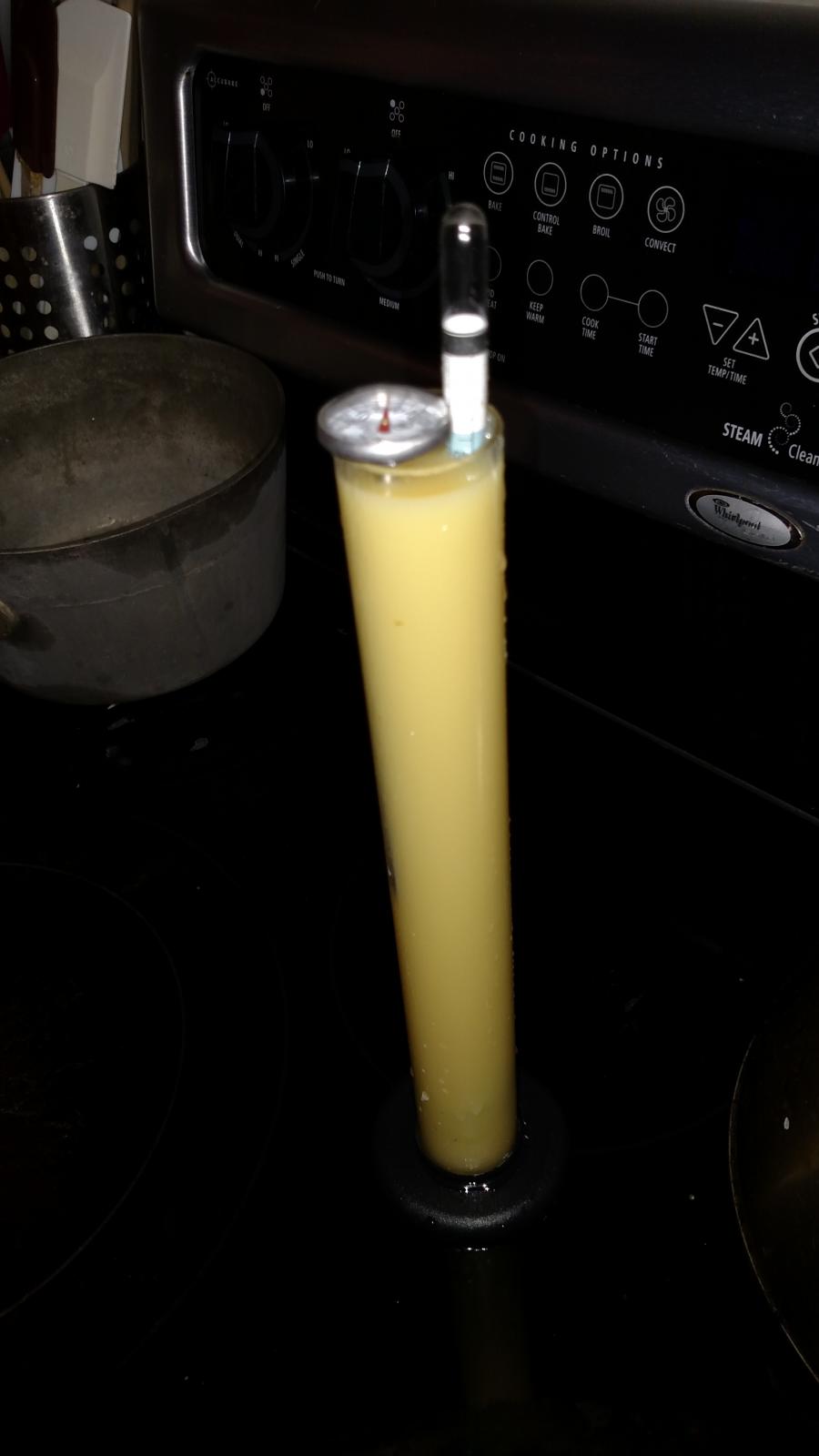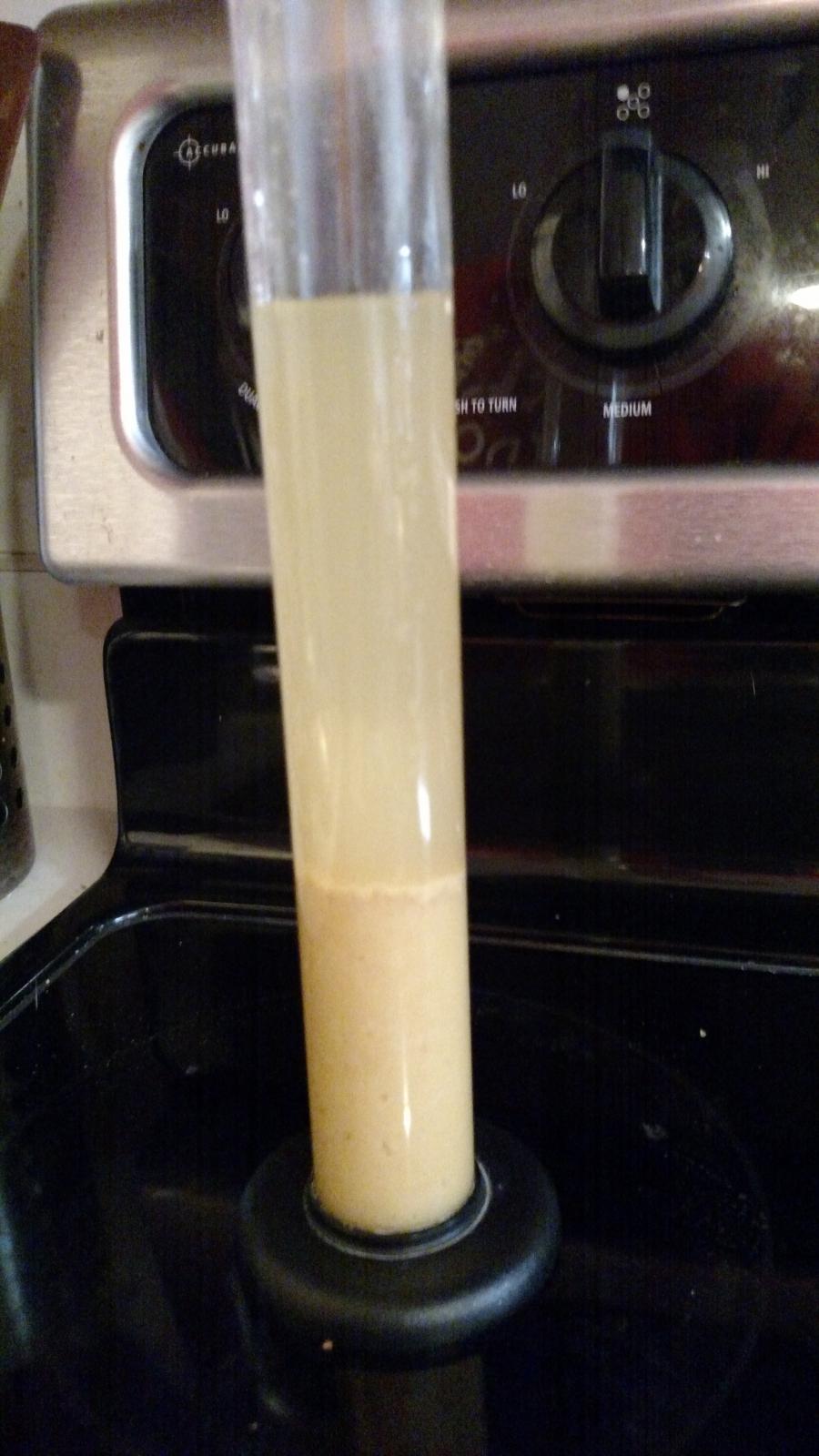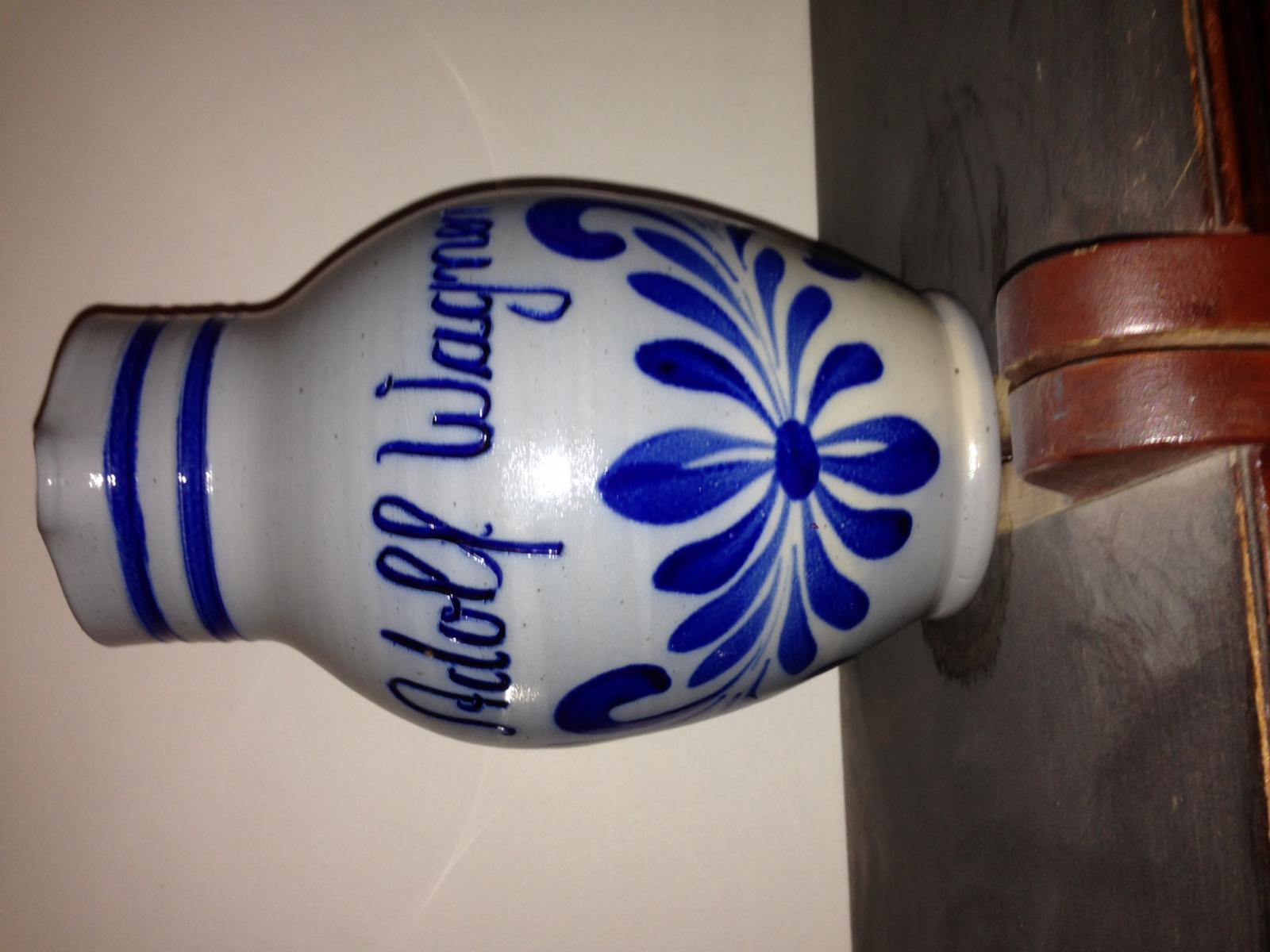slimreturns
Member
- Joined
- Nov 13, 2014
- Messages
- 12
- Reaction score
- 2
Great. Thanks for all your help. I'll update in this thread as I go.

You need to continue to keep an eye on these. Definately dont let them get any direct sun. I've lost a couple bottles that way. I sometimes lose a bottle or two in the summer when temps get up to 80+ in the basement, although no problems last summer. If you can put your bottles in bottle crates and set the bottom crate in a tupperware bin, that will make the cleanup a lot easier if you do forget and get a burst bottle. If you didnt sulfite these, I wouldn't recommend keeping them around much past April anyway. They might be OK for longer, but the risk of them turning increases over time
I tried bry97 and it won't seem to start. I pitched Friday night and it's at about 68 degrees. I have an extra pack of Nottingham, should I wait or just pitch notty? All 3 other buckets started (different yeast s04 s05 and cote de blanc)
The flavor is pretty darn good. Maybe a bit dryer then I like. I crashed this at 1.008 I believe. My next batch I crashed around 1.010 or 1.012 if i remember correctly. So Hopefully I will get a bit more sweetness with this next batch.
The flavor was a bit thin or a slight watery taste.....If I am limited to just a small variety if apples. golden red delicious, Rome beauty, Jonathan, and Winesap apples and i think Fuji. Would adding malic acid or tannins ect be a good option or because of the limited apples I have at my disposal?
Any other advice that you can offer or send me in the right directing to experiment next season?
Very glad to hear that this was a success! If the carb is strong compared to a commercial cider, then it probably dropped another ~3 points in the bottle, so you'd be looking at ~1.005, which IMHO is about as dry as you can go and still be drinkable by the pint. If you crashed your most recent batch at 1.012 and dont let it get quite as carbed, that should put you at 1.010, which is noticeably sweeter.
Yep, I got home today and the airlock was going nuts. Strange I stared at it for a full 3 minutes this morning, no movement.
One thing I missed but read in one of your posts yesterday was that I shouldn't have used sulfites. 3 Camden tabs crushed. Oops.
I was wondering why the OP mainly uses ale yeasts
Will see how it turns out since I am using one of the yeasts not recommended.
I didn't have any issue when I added the honey, but I took some apple juice that I shook up to get the rest of the honey out and it flared up after I added that. Not too bad though.


Been experimenting over the past 2-3 years and this season stumbled upon 2 yeasts that no one seems to talk about on these threads
Disclaimer, I like dry, still ciders as close to Frankfurt style applewine as I can get them, so if you like them sweeter this is not for you)
Thanks for posting that-- I'll have to add those two yeasts to my list to try. There isn't a whole lot of information out there on Frankfurt style Ebbelwoi and I've never found it available for purchase in the US. I had a pitcher of this served with soda water when I was there a few years ago. Did you add any acid to make it more sour?
Adolf Wagners was actually the place I went to. I only went once but I still dream about their onion beer cheese with pumpernickel bread. It's the only Apfelwein I've ever had but it was really good.

Three reasons: (1) Most Ale yeasts will go dormant and drop to the bottom of the carboy if you cold crash the cider. This makes it relatively easy to remove the yeast so that you have a semi sweet cider. (2) They generally use more nutrient, which make crashing more reliable and often causes them to stop on their own at higher gravities (although an ale yeast can easily take a cider down to 0.996 with high nutrient juice) and (3) They produce a cider that tastes better (that is subjective, but most folks who like a semi-sweet or sweet cider agree)
Those are the short answers. You can use the search function to find longer explanations of these points
Adolf Wagners was actually the place I went to. I only went once but I still dream about their onion beer cheese with pumpernickel bread. It's the only Apfelwein I've ever had but it was really good.
Is headspace important at all when making ciders?
If you are using a top fermenting beer yeast like Wyeast 3333, 3056 or 3068, then yes, you will have more yeast/foam/kreusen than you can handle and want at least 1/4 of your container empty headspace WITH a blow off tube
If you use wine yeast like SN9, VR21, or others then not nearly as much.
Sorry, I should have specified. Could I ferment 1 gallon in a 4 gallon container? Would it matter with cider? Or mead??
Would crashing say 1,015 be ok with s04?
Could I ferment 1 gallon in a 4 gallon container?
Just finished binge reading all 104 pages of this thread. I had to register it was so great.
I started my first cider two weeks ago with just some store bought apple juice and bakers yeast (Fleischmann's). Strangle enough it turned out - like a white wine but it turned out. Three of my friends gave it a test drive and all thought it was good, I thought they were crazy, it didn't taste like apple to me. That's obviously because i fermented dry and the apple taste gets digested under 1.005 it looks like.
My next step is to do another batch and try to catch it around that range for a semi-sweet, my plan was to use Nottingham so i could crash it and not use chemicals, but my questions is this. My apartment is really warm here in NC. It probably hasn't been below 75ºF in my place for months. Do you think it would be ok to pitch Nottingham at that range and let it go. The higher temp is going to be hard to catch at the range i want, but will it also produce off flavors?
If not any suggestions? I still have one packet of Fleischmann's left (came in packet of 3, used 2) which is a lot cheaper than buying new yeast for a 1 gal carboy.
You posted a couple years ago about using some cider specific apples, but the results from your tasting party didn't seem like they made much of an impression ... just wondering if you had any further thoughts on this. I'm going to plant several cider apple trees this winter, with several more eating apples the next year




Trees are more than 60 years old, never fertilized, mix of five different old varieties (Herrnhut, Bankroft, Beforest and some unknown).
should I add some (maybe 1/4 or 1/2) nutrient to avoid making fart-cider or it will somehow mellow in following days of fermentation or even after bottling?
Enter your email address to join: